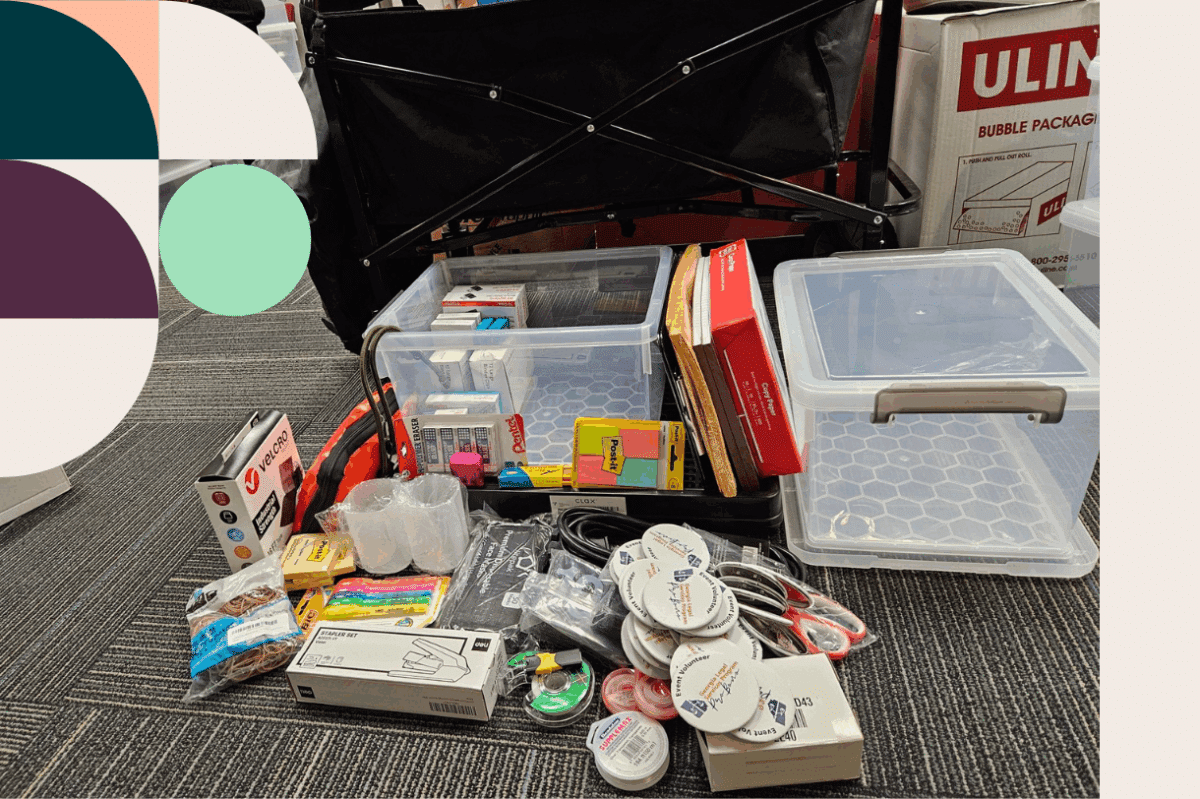Speakers:
- Gretchen Slusser, President, threadpartners
- Julie LaEace, Senior Pro Bono Counsel and Director of Social Responsibility, Perkins Coie
EJC 2025 was full of hellos, embraces, and many amazing breakout sessions –so many that it was tough choosing just one during each breakout time. I opted to attend a session that aligns with a question I hear often in my role: “How can we engage more attorneys in pro bono?” If you have this question too, and you weren’t able to attend this session (which was so popular it spilled out into the hallway!), I hope this recap does the session justice and helps you answer this question. Whether you’re at a firm, corporate in-house legal team, or a legal aid organization, there’s a nugget in here for all.
Gretchen and Julie teamed up to present on pro bono research, digging into the ‘why’ behind why attorneys don’t take on pro bono, and actionable next steps to reduce the barriers to taking on a matter or attending a clinic. You may have heard these barriers before, but the tangible next steps and action items were the differentiator in this session. The result is repeatable processes, less admin work, and a model to hit the ‘easy’ button to onboard new and repeat volunteers.
WHY don’t attorneys do pro bono, and how can you reduce the barriers?
There are many reasons, but a few of them include:
- Lack of time / billable hour pressures
- Unfamiliarity with legal aid needs & systems
- Perceived lack of expertise in relevant areas
- Firm policies or culture that don’t prioritize pro bono
→ The action: Shifting the mindset of those who don’t do pro bono may take more encouragement, but here’s how to get started. Gretchen and Julie suggest getting buy-in from the top down, creating a structure for repeatable opportunities, and offering flexible options like clinics or ongoing work with specific LSOs. This gives attorneys defined time commitments, group accountability, and helps them ease into pro bono, reducing the fear of the unknown.
WHAT can you do to help demystify pro bono for attorneys?
I think it’s safe to say attorneys are risk averse, so if it’s unclear what they are committing to, it’s less likely for them to say “yes” to pro bono, especially if they haven’t done pro bono before. This highlights the importance of:
- Well scoped opportunities
- Good mentorship from more seasoned lawyers
- Clinics with entire firms, practice groups, first year lawyers, or even corporate clients
→ The action: Julie stressed the success of some of their evergreen opportunities from LSOs that have been tailored for their attorneys. The success is due to the attorney knowing what to expect, having a good sense of duration, and because the opportunities are available firm wide, there is a sense of familiarity and mentors nearby.
By now, you may see a few themes starting to emerge, which brings me to my next point…. Putting it all together.
HOW do you align opportunities with the why and the what?
The why and the what surface themes where firms, in-house legal teams, and LSOs can start to make a change to reduce barriers to pro bono: shorter durations and clear expectations. So, how do you make these into replicable events? First, answer these questions:
- Do you have recurring themes with matters where it can become repeatable?
- If these are larger or more long-term matters, can they be broken down into ‘bite-sized’ chunks?
- Do you have success stories from previous cases?
→ The action: If you answered ‘Yes’ to any of these, here’s some tangible next steps offered by Julie and Gretchen:
- Create a training video for common matters, it’ll save time and energy answering the substantive questions and not repeating yourself.
- Create evergreen opportunities that are quick and relatively easy to complete (And once someone finishes one, if it was successful, offer them a new opportunity! If it wasn’t fully successful, use that as a conversation starter and refine the process).
- Host clinics with groups of people to help with accountability and familiarity. Creating a quick FAQ can help attorneys know what to expect prior to and the day of the event. Clinics are also a great way to connect firms with their corporate clients.
- Break down larger matters into smaller segments, possibly even using a clinic model to have multiple attorneys working on the matter segment together.
- Provide administrative support to help attorneys handle logistics such as filings and court procedures, court logistics, or filings.
- Share success stories!
- Communicate openly to refine processes and ensure everyone feels supported and aligned.
The groundwork for replicable opportunities and other ways to reduce barriers, led to a great conversation with those in the room sharing ideas from the LSO and pro bono counsel perspective. One LSO referenced sending out communications to their volunteer base to keep them informed of new pro bono matters. Other LSOs shared how they review objections with firms prior to sharing opportunities. There are so many ways to take this information and tailor it to the specific use case to get more attorney engagement with pro bono opportunities. Now, where do you start? The first, most simple piece of the puzzle is to start open and candid conversations with your LSO, law firm, or corporate partners to be able to take the next step in filling gaps.
Who comes to mind as the first conversation? Send them a text, go grab a virtual coffee, plan your next move, and you’re already one step closer to increasing engagement and working to close the justice gap!




